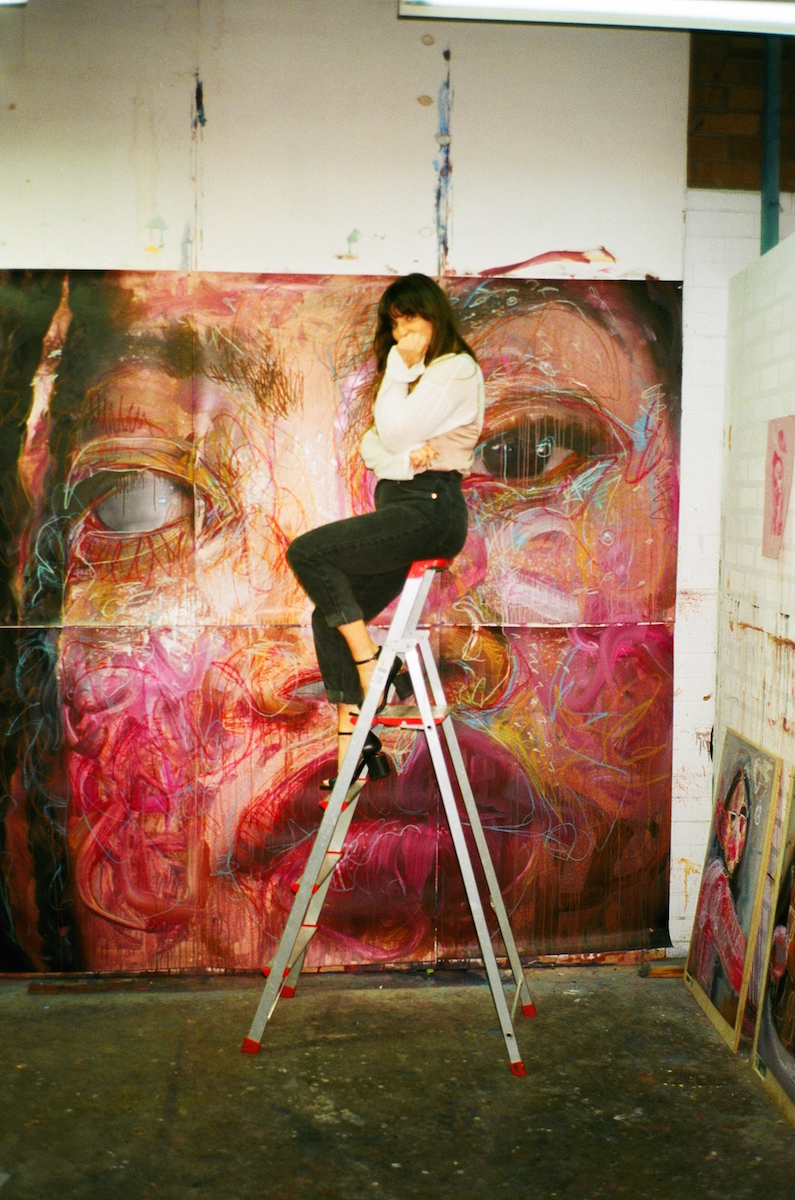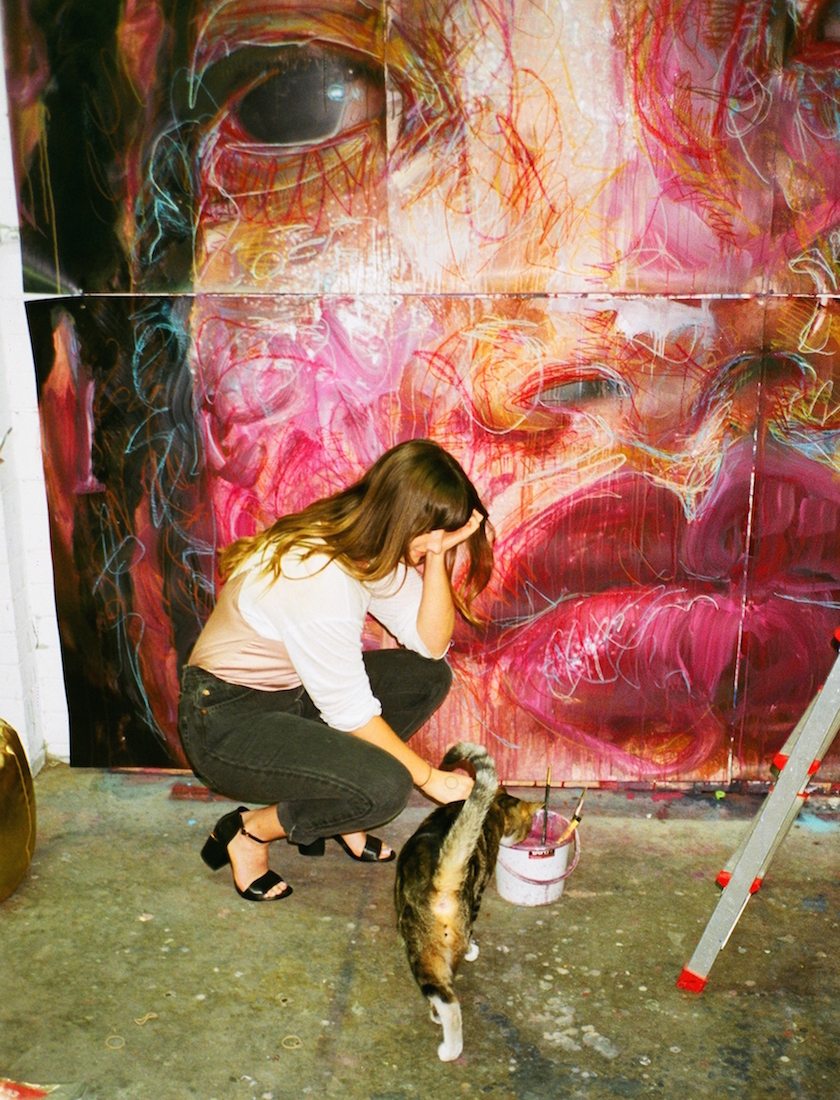Jess Cochrane’s artwork looks like a familiar dream. The places and faces are somewhat recognisable but distorted in a way that you can’t quite put your finger on. That’s because Jess photographs her beautiful subjects before painting over them in thick, bright, dripping strokes with bulbous noses and bung-eyes until they are barely recognisable versions of their former selves.
What started out as doodling over fashion mags has turned into blown-up, large-scale works that are as grotesque as they are hauntingly beautiful. We caught up with Jess to chat about how she defines her own kind of beauty through her paintings.
i-D: First thing’s first, how did you get into painting?
Jess: I’ve always drawn and painted. My dad is also an artist so it has always been something I’ve done but I transferred my degree from Graphic Design to Fine Art a couple of years ago when I realised that this is exactly what I should be doing. That was when I started to pursue it more professionally.

Your painting style is really refined. How did you develop it?
It started in University and in experimenting with what I wanted to say in my final year’s work. I was drawing inspiration from my everyday and I asked myself what it is in my everyday that I wanted to have more of an understanding of. One of the main things was looking at fashion magazines, editorials and beauty and also doing life-drawing and reading feminist texts. There were so many contradictory things in my day-to-day so it was a way to try to understand them and piece it all together; a way to try and reveal why I am the way that I am. My practice began with drawing over magazine images in a way that was almost vandalizing it. I wanted to see how the images reacted to the paint and whether it changed the emotion behind the image. That’s where it started and now it has just expanded so quickly.
You say that your work is like a reversal of re-touching in fashion magazines. Did you always set out to have that message behind your work?
I really didn’t. I find my work to be really personal and I’ve always struggled with anxiety so a lot of it is trying to figure out where it comes from. It’s also about not being enough, not feeling like enough and not fitting into societal norms. I never intended it to be so political but I guess the personal is quite political which is what I’ve come to discover through this.

It’s interesting what you say about vandalism. It’s almost like you’re collaborating with the person who took the original photo.
Yeah a lot of the work I started with was in a magazine or I’d team up with the photographer but with all the work that I do now, I pretty much take the photos myself. Having said that, it’s still collaborating with the subject of the photograph. I would never photograph someone who didn’t feel a connection to the work so it’s almost like a way to tell their story as well as my own. It’s really about making connections with people that feel the same.
There’s something quite beautiful in how grotesque the faces become. Do you see your works as beautiful or are you actively trying to make them uglier?
I think a bit of both. The whole point is to change the way the perfectly composed image looks. In applying any medium over the top of the image I’m really asking the viewer to consider what they think is beautiful. I think that the final product is always quite stunning. It’s definitely not perfect but it’s beautiful and the main message in my work is that perfect isn’t cool. Perfect is shit and it’s boring and when we are living in an age where everything is advertised to us and women are conditioned to feel shit about themselves, the message behind my work is to embrace individual quirks and individual beauty because at the end of the day I don’t think it’s really important, especially considering how fucked up the world is at the moment! The whole world is pretty crazy so it’s a small reminder to take care of yourself and to not buy in to bullshit.
Credits
Text Kasumi Borczyk
Photography Chris Loutfy
